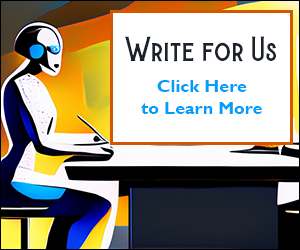In 2023, 69% of companies attempting AI implementation reported that lack of appropriate talent was their biggest obstacle, according to McKinsey’s State of AI report.
As the demand for AI skills continues to outpace supply – with LinkedIn reporting a 32% increase in AI job postings in 2024 alone – businesses need concrete strategies to develop their AI workforce capabilities.
How to assess AI skills effectively?
When starting AI initiatives or projects, businesses need to understand their existing capabilities and identify specific skill gaps. A comprehensive assessment helps you make informed decisions about where to invest in training or recruitment, ensuring alignment between your technical capabilities and business objectives.
Begin by evaluating your organisation’s AI readiness and AI culture using a structured assessment tool or create your own.To create your own, think about defining a matrix that catalogues three essential skill areas:
- Technical skills
- Analytical capabilities
- Business translation skills
You can also deploy targeted skill discovery assessments to uncover hidden talent within your organisation. You might have an AI champion in-house already and might not know.
These assessments should take approximately 30-45 minutes to complete and include basic data analysis concepts, logic problems, and critical thinking challenges. Send these assessments to employees in adjacent technical roles such as business analysts, digital marketers, and IT support staff.
The assessment should include practical exercises like:
- Identifying patterns in datasets
- Proposing organisational structures for information flow
- Explaining how they would approach a data-related business challenge
Studies show that companies that implement quarterly assessment cycles continually discover employees with untapped potential for AI roles.
If you are looking for detailed information, design structured, role-specific technical interviews that evaluate both theoretical knowledge and practical application.
For example, when interviewing potential AI contributors, present them with actual business problems and ask them to design AI-based solutions. With this approach, you will understand who can apply their knowledge in your specific business context.
To hire or not to hire, that is the question
Instead of viewing talent acquisition as a binary choice between hiring externally or training internally, successful organisations implement a balanced approach to maximise the advantages of both.
If you look at research, a common way to do it is by using a 70-20-10 talent strategy for AI capability development:
- 70% – upskilling existing employees through formal training programmes and project-based learning
- 20% – strategic external hires in specialised roles where you have critical knowledge gaps
- 10% – partnerships with academic institutions to build a pipeline of future talent
While this might make sense on paper, it’s only really suitable for large enterprises. For most organisations, sticking to a 65-35 strategy is a better approach.
After you have identified the knowledge gaps, you can then:
- Create structured AI apprenticeship programmes that pair junior employees with experienced AI practitioners
- Establish and communicate clear career pathways from technical to AI roles. Document the specific skills, experiences, and training required to move between positions. As an example, IBM’s “Data Science Pathway” programme enables employees to transition into AI roles through structured learning modules and project experience
- Implement metrics to measure the ROI for your talent development initiatives. KPIs will vary from company to company, but you can use these for reference:
- Project delivery times
- Successful implementation rates
- Business impact metrics
- User adoption rates
- Employee retention rates
- Knowledge transfer effectiveness
Get non-technical users to embrace AI with confidence
If you think that AI is for tech-savvy users only, think again. More often than not, successful AI implementations in organizations happen because of non-technical employees. Therefore, creating baseline AI literacy throughout your company accelerates adoption, improves collaboration, and generates more valuable use cases.
Develop internal AI champions or ‘translators’ who serve as a bridge between technical and business domains. These individuals don’t necessarily build AI systems but understand enough to identify opportunities, communicate requirements, and interpret results.
You can also develop learning modules to provide basic AI understanding for everyone. The modules should touch on a few concepts:
- Explaining AI concepts in non-technical language
- Focus on business applications rather than technical details
- Include practical examples relevant to your industry
- End with a simple assessment to verify understanding
Depending on the size of your business — and needs — you can create quarterly use case workshops where business units work with technical staff to identify potential AI applications. These sessions bring together people who understand the business problems with those who understand the technical possibilities. This is incredibly powerful, especially if the sessions can be facilitated by a ‘translator’.
Invest in continuous learning efforts
AI technologies evolve fast. So fast that by the time you are finished reading this, a new model has been released. So, companies need continuous efforts to maintain and expand workforce capabilities over time. Take Netflix as an example. They implemented quarterly skill refresh sessions where technical teams dedicate one day to updating their AI knowledge based on emerging trends and technologies.
You can replicate the session by ensuring they include:
- External experts sharing new developments
- Internal knowledge sharing about recent projects
- Hands-on workshops with new tools or techniques
- Discussion of industry trends and competitive developments
- Planning for skill development priorities
If you don’t think your employees will enjoy sessions or workshops, you can designate AI learning budgets annually per technical employee. These funds should be specifically allocated for learning resources such as courses, conferences, certifications, and books related to AI development.
AI assessment
The talent gap in AI remains substantial, but it also represents an opportunity for companies willing to invest thoughtfully in their people. By taking systematic approaches to assess, develop, and continuously learn, organisations of any size can build the capabilities needed to leverage AI effectively, turning potential disruption, into lasting competitive advantage.

Vitor Monteiro is the CTO and co-founder of Unflow, a software and AI innovation studio, where he specialises in AI-driven SaaS products, AI integration in software, and scalable backend architectures. With expertise in data management, authentication and security, and DevOps, he helps startups bridge the gap between business and tech, optimising engineering teams and building high-performing AI-powered solutions.
As a lecturer at Universidade Lusófona, Portugal's largest private university, Vitor guides the next generation of engineers. His work spans software development for non-technical founders, and debugging legacy systems, helping businesses harness AI for innovation and growth.






